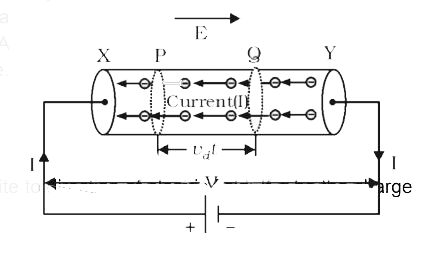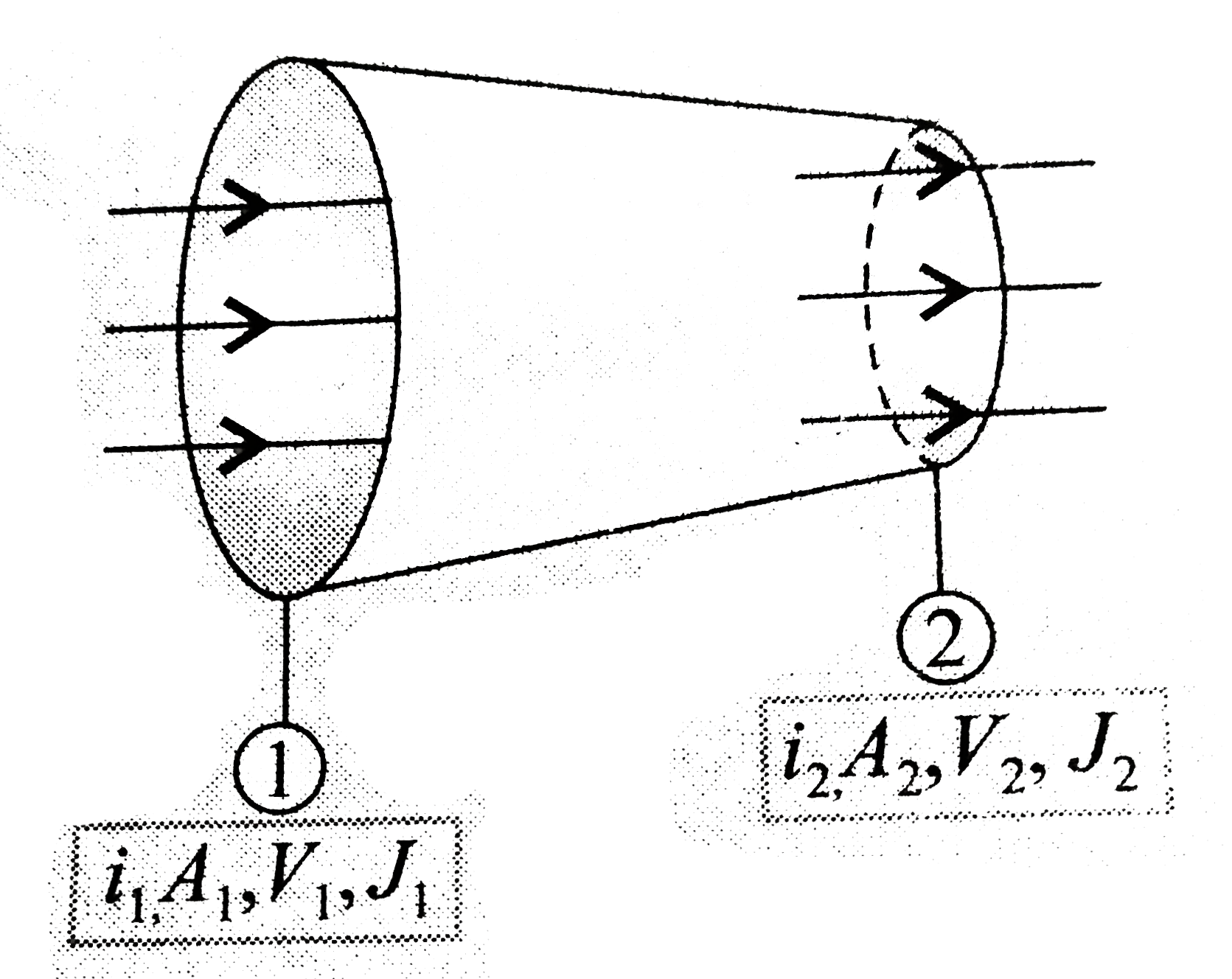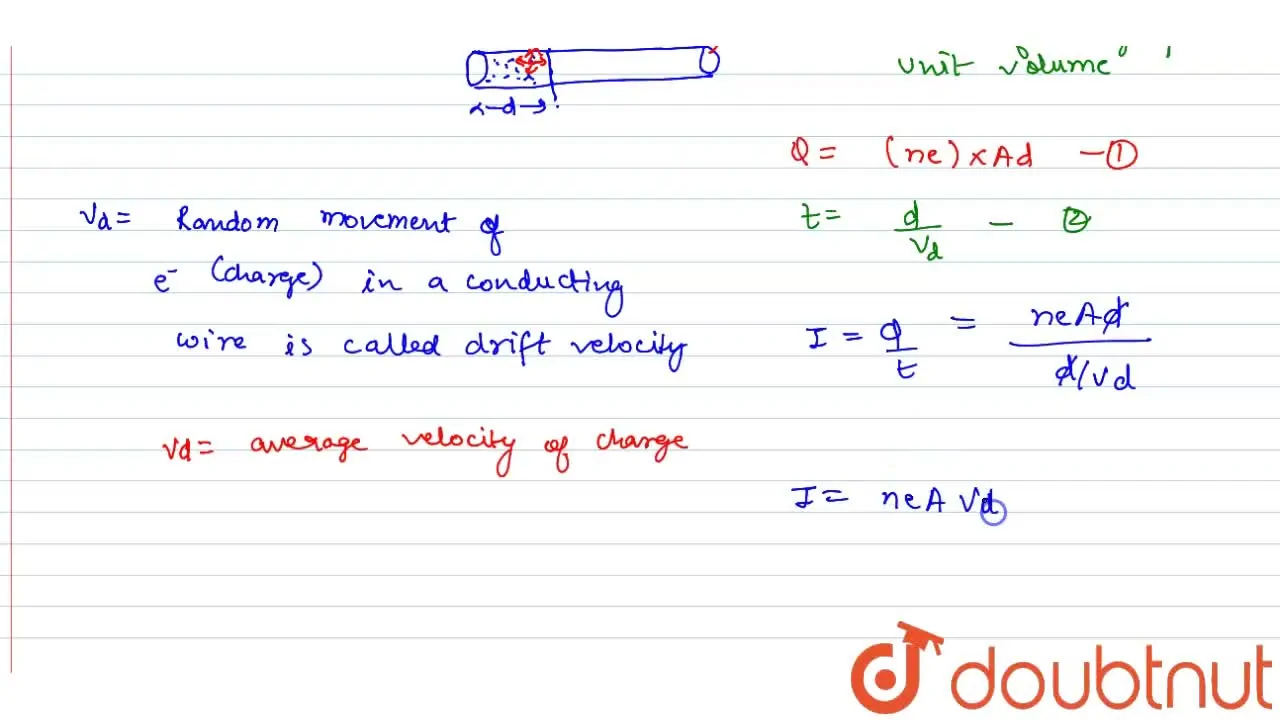What is drift velocity? Establish a relation between current and drift velocity?
Relation between electric current and drift velocity: Consider a uniform metallic wire XY of length l and cross-sectional area A. A potential difference V is applied across the ends X and Y of the wire. This causes an electric field at each point of the wire of strength E=VI..........(i) .
Due to this electric field, the electrons gain a drift velocity opposite to direction of electric field. If q be the charge passing through the cross-section of wire in t seconds, then
Current in wire I=qt.........(ii)
The distance traversed by each electron in time t = average velocity × time vdt
If we consider two planes P and Q at a distance vt in a conductor, then the total charge flowing in time t will be equal to the total charge on the electrons present within the cylinder PQ. The volume of this cylinder = cross sectional area × height Avdt
If n is the number of free electrons in the wire per unit volume, then the number of free electrons in the cylinder =n(vdt)
If charge on each electron is −e(e=1.6×10−19C) then the total charge flowing through a cross-section of the wire
q=(nAvDt)(−e)=−≠Avdt….(iii) CUrrent flowing in air = I=qt=−≠vdtt
Current =-I=−≠vd....(iv)
This is the relation between electric current and drift velocity. Negative sign shows that the direction of current is opposite to the drift velocity.
Numerically I=≠vd ...(v) Current density. ∴J=IA=≠vd⇒j∝vd
That is, current density of a metallic conductor is directly proportional to the drift velocity.

Related Playlists
- BOOK - VMC MODULES ENGLISHCHAPTER - DC CIRCUITEXERCISE - LEVEL-1 DAILY TUTORIAL SHEET-115videos
DC CIRCUIT
- BOOK - VMC MODULES ENGLISHCHAPTER - DC CIRCUITEXERCISE - LEVEL-1 DAILY TUTORIAL SHEET-215videos
DC CIRCUIT
- BOOK - VMC MODULES ENGLISHCHAPTER - DC CIRCUITEXERCISE - LEVEL-0 SA-II: Short Answer Type - II12videos
DC CIRCUIT
- BOOK - VMC MODULES ENGLISHCHAPTER - CURRENT ELECTRICITYEXERCISE - IN-CHAPTER EXERCISE-F10videos
CURRENT ELECTRICITY
- BOOK - VMC MODULES ENGLISHCHAPTER - DYNAMICS OF A PARTICLEEXERCISE - JEE Advance (Archive) Level - II (SINGLE OPTION CORRECT TYPE )31videos
DYNAMICS OF A PARTICLE
Similar Questions
Genetic drift
View SolutionGenetic drift
View SolutionDefine the term 'drift velocity' of electrons in a current carrying conductor. Obtain the relationship between the current density and the drift velocity of electrons.
View SolutionWhen current is 4 A in a conductor the drift velocity is vd. When the current is 3 A the drift velocity will be
View SolutionRelation between magnetic moment and angular velocity is -
View SolutionRelation Between Drift Velocity And Current
View SolutionWrite the mathematical relation between mobility and drift velocity of charge carriers in a coductor. Name the mobile charge carriers responsible for conduction of electric current in (a) an electrolyte (b) an ionised gas.
View SolutionCurrent is flowing from a conductor si nonuniform cross sectional area. If A1>A2, then find relation between
a. i1andi2
b. j1andj2
c. (vd)1and(vd)2
(drift velocity) where I is current, j is current density, and V is drift velocity.
 View Solution
View SolutionDefine drift velocity of free electron . If relaxation time is r then write a vector relation b etween drift velocity and electric field.
View SolutionWhat is the relation between Velocity, displacement and time?
View Solution


